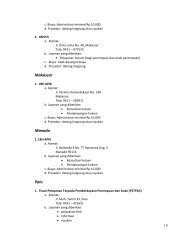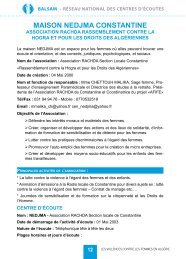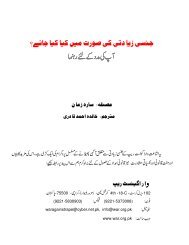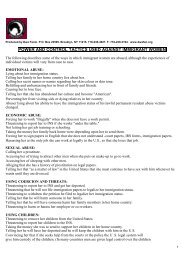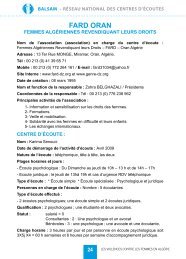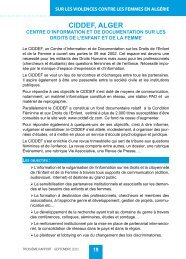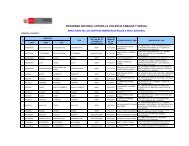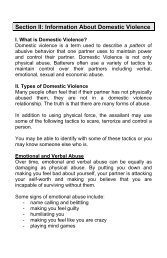Working with Battered Women: a Handbook for ... - Hot Peach Pages
Working with Battered Women: a Handbook for ... - Hot Peach Pages
Working with Battered Women: a Handbook for ... - Hot Peach Pages
Create successful ePaper yourself
Turn your PDF publications into a flip-book with our unique Google optimized e-Paper software.
I. IDENTIFICATION OF ABUSEIdentification is the first aspect of care. In order <strong>for</strong> you to identify if domestic violence isaffecting a patient's health, it is crucial to ask all women who come to you <strong>for</strong> care aboutdomestic violence. To be effective, the screening procedure should be made a part of regularroutine. All professional staff should become familiar and proficient <strong>with</strong> various ways ofasking patients about abuse they may be experiencing and at communicating this in<strong>for</strong>mation toappropriate referral sources.How to Ask About Domestic Violence♦ Most importantly, you interview the patient on her own—away from anyone who may haveaccompanied her, including sisters, daughters, friends, children or partner. She especially maynot feel free to speak openly and honestly if her partner is nearby.♦ Consider starting <strong>with</strong> the first two questions of the Woman Abuse Screening Tool (WAST)on the next page. These questions can “easily and unobtrusively” be asked along <strong>with</strong> the usualquestions during a complete physical (i.e. questions about history of heart disease in the family,or alcoholism), or asked during other routine check-ups.“The [first] two simple and non-threatening questions from the WAST were effective indetecting women who might be experiencing abuse and who warranted further questioning<strong>with</strong> the full WAST. From a clinical perspective, these two questions can be easily andunobtrusively included in a family physician's interactions <strong>with</strong> female patients duringroutine office visits. If a woman answers “A lot of tension” and “Great difficulty”,respectively, to these first two questions, the physician can then use the remaining WASTquestions or other appropriate questions to elicit more in<strong>for</strong>mation about the patient'sexperience of abuse” (from Judith Belle Brown, PhD; Barbara Lent, MD, CCFP; Pamela JBrett, MA; George Sas, MD, CCFP; Linda L. Pederson, PhD, Development of the WomanAbuse Screening Tool <strong>for</strong> Use in Family Practice, Family Medicine (Fam Med 1996;28(6):422-8) p. 426)When asking questions 3 to 7 of the WAST(or other questions about abuse):• Avoid an intimidating stance: sit at or below the patient's level.• Use questions that tell her that you know wife abuse exists, that you will believe her if she tellsyou, that you won't be shocked by her answer, and that you are concerned.• Ask about abuse in a direct and compassionate way. Focus your attention directly on theperson to increase trust and build rapport. Avoid doing paperwork during the interview.• Affirm clearly that you believe violence against women is a crime.• Offer support in an emphatic, non-judgmental way that shows you respect the patient.• Make it clear that you will not compromise her safety if she discloses to you.• Assure her that what she says to you is confidential—you will only call the police if she wants.16



